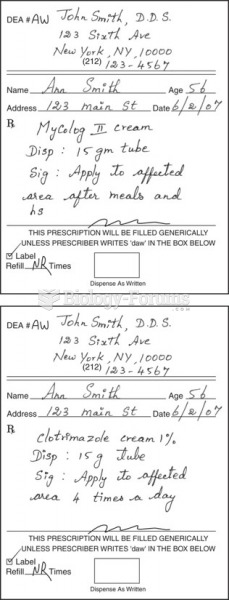Answer to Question 1
ANS: A, C, D, E
Homogeneity is a more extreme form of equivalence in which the researcher limits the subjects to only one level of an extraneous variable to reduce its impact on the study findings. To use this strategy, you must have previously identified the extraneous variables. Matching is used when a subject in the experimental group is randomly selected and then a subject similar in relation to important extraneous variables is randomly selected for the control group. Heterogeneity is designed to increase generalizability of the study findings, not to control for extraneous variables. In blocking, the researcher includes subjects with various levels of an extraneous variable in the sample but controls the numbers of subjects at each level of the variable and their random assignment to groups within the study. Stratification involves the distribution of subjects throughout the sample, using sampling techniques similar to those used in blocking, but the purpose of the procedure is even distribution throughout the sample. The extraneous variable is not included in the data analysis. Distribution of the extraneous variable is included in the description of the sample.
Answer to Question 2
ANS: B, C
Design strategies used to control extraneous variables include random sampling, random assignment to groups, selecting subjects that are homogeneous in terms of a particular extraneous variable, selecting a heterogeneous sample, blocking, stratification, matching subjects between groups in relation to a particular variable, and statistical control. Random sampling increases the probability that subjects with various levels of an extraneous variable are included and are randomly dispersed throughout the groups within the study (Thompson, 2002). This strategy is particularly important for controlling unidentified extraneous variables.







